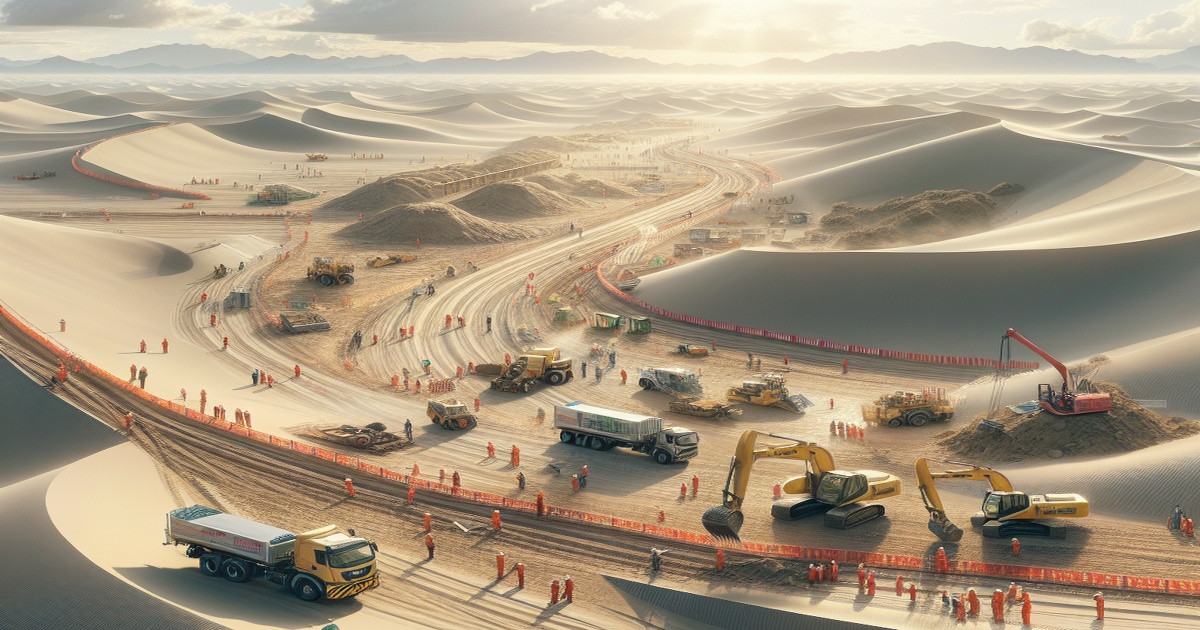A significant milestone was reached on Monday with the completion of a sand stabilization and desert-edge containment project in Zhongwei, located in the Ningxia Hui autonomous region. This initiative represents a crucial step in China's ongoing efforts to mitigate the expansion of the Tengger Desert.
The project resulted in the construction of a barrier that stretches 153 kilometers in length and varies in width from 10 to 38 kilometers. This barrier is strategically positioned along the southeastern edge of the Tengger Desert, which is China's fourth-largest desert, covering an area of 42,700 square kilometers across parts of the Inner Mongolia autonomous region, Gansu province, and Ningxia.
To combat the shifting sands, workers employed a technique of embedding brush-like straw ropes into the desert floor. These ropes were arranged in 1-square-meter grids, known as straw checkerboards, designed to stabilize the surface and prevent erosion.
The creation of these straw checkerboards is essential for stabilizing the sand, allowing for the growth of vegetation. The next phase of the project involves planting drought-resistant grass and shrubbery within the checkerboards to establish a resilient green barrier along the desert's edge.
The project utilized an updated method developed in collaboration with the Northwest Institute of Eco-Environment and Resources of the Chinese Academy of Sciences. This method involved using machinery to weave straw into brush-like ropes, replacing the previous reliance on manual labor. This new approach has significantly improved working efficiency and extended the lifespan of the straw checkerboards.
Zhongwei's location is critical, situated at a key point between the Qilian and Helan mountains. This narrow corridor represents the Tengger Desert's only path of expansion to the southeast. Experts believe the project will create a vital ecological shield in the upper reaches of the Yellow River, improving regional environmental conditions and preventing sandstorms from reaching the North China Plain.
Furthermore, Zhongwei serves as a major transportation hub in western China and a key node for the West-East Gas Pipeline Project. Without this project, advancing sand dunes could threaten Zhongwei's urban area and impact regional transportation infrastructure, as well as the country's energy security.
This project in Ningxia is part of a larger national effort to combat desertification in key regions. In November of the previous year, the Xinjiang Uygur autonomous region completed a sand-blocking green belt encircling the Taklimakan Desert, China's largest desert.







5 Comments
Bermudez
This is a much-needed effort! Protecting urban areas like Zhongwei from sand encroachment is essential for development.
Bella Ciao
This is a fantastic initiative! Every step towards combating desertification is a step towards a healthier planet.
Comandante
This project sounds very labor-intensive. I wonder if it will create jobs or if they are just going to automate everything with new machinery.
Coccinella
Fantastic to hear about the collaboration with scientists for better techniques! Innovation is key in environmental conservation.
Muchacho
Bravo to the team for thinking outside the box! Effective sand control is vital to maintaining land resources.